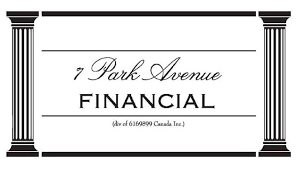|
Staying Liquid: How to Ensure Healthy Cash Flow
Is Cash Flow Financing a Bit of a Jigsaw Puzzle? Not Anymore!
YOUR COMPANY IS LOOKING FOR BUSINESS FINANCE SOLUTIONS!
Mastering the Art of Cash Flow: Strategies for Canadian Entrepreneurs
You've arrived at the correct address! Welcome to 7 Park Avenue Financial
Financing & Cash flow are the biggest issues facing businesses today
ARE YOU UNAWARE OR DISSATISFIED WITH YOUR CURRENT BUSINESS FINANCING OPTIONS?
CALL NOW - DIRECT LINE - 416 319 5769 - Let's talk or arrange a meeting to discuss your needs
EMAIL - sprokop@7parkavenuefinancial.com

IS THERE CASH IN YOUR CASH FLOW?!
Cash flow financing can often feel like a jigsaw puzzle complication to Canadian business owners and financial managers - it can be a long, challenging trail to the path towards proper working capital financing in your business operations to ensure you have enough cash.
We've got some solutions for your company's working capital - Let's dig in.
Cash flow financing typically makes or breaks your company as your firm grows or struggles to overcome temporary challenges.
Cash flow refers to the amount of cash that moves in and out of a business over time. We'll provide real-world, immediate solutions for that working capital challenge in your company's operations that are always top of mind.
INTERPRETING WORKING CAPITAL NEEDS
We haven't found anyone who disagrees that working capital management tends to be the single most important measurement for your firm on a daily and ongoing basis regarding a company's liquidity and net working capital- it always comes back to that 'cash flow is king' fellow!
If your liquidity is limited, you need to recognize that. Your accountant will efficiently and quickly calculate your positive working capital, potentially advising you that you're in a great position. He or she does that by going to your balance sheet and subtracting current liabilities from current assets. Let's say he or she returned and gave you the great news - you have $4 of current assets for every dollar of payables. Sounds great so far.
Wrong, because you might find that your actual cash on hand is only .30 cents for every dollar of payables due, and all your money is tied up in - you guessed it, receivables and inventory that are slow-paying and slow-turning, respectively.
THE IMPORTANCE OF WORKING CAPITAL
The day-to-day 'real world' measurement of cash flow is your being comfortable with meeting short-term obligations - pay accounts payable, purchase inventory, meet interest payments on loans, leases, & fund wages for employees, etc. - avoiding negative working capital scenarios via positive cash inflows.
The financial metric ' current ratio ' allows businesses to monitor cash flows. If a transaction in a business increases current assets, that hurts cash flow changes - Typically, that reflects a company increasing a/r and inventories.
QUALIFYING FOR WORKING CAPITAL LINES OF CREDIT AND LOANS
So, why do you have a cash flow financing need, and what is the cost of a working capital cash facility that makes sense? Sitting down with clients and talking about their cash flow needs often revolves around the same key issues they are going through in understanding the working capital formula :
Temporary financial losses,
Lack of long-term debt financing (i.e. buying or leasing noncurrent assets without good long-term debt solutions)
Growth in your company's revenues!
Dramatic increases in sales when growing rapidly, as great as they sound, lead to cash flow financing needs for money needed to grow/survive
The internal do-it-yourself solution? Turnover of your receivables and inventories - easy to say - difficult to achieve.
The external solution? Monetizing receivables and inventory and in effect your future sales via a cash flow financing facility.
If your firm is in a great industry, has clean balance sheets, and makes money, your bank facility for a revolving line of credit will typically be in the 5-10% per annum range for the cost of financing.
Should you abandon the ship if your firm doesn't qualify for bank financing? Definitely Not. Working capital financing via receivables financing and asset-based balance sheet lending can solve all your problems and turn your firm into a cash flow machine.
Those newfound cash flows come at a price - Rates tend to be in the 1.5 - 2% per month range, but you are paying that now by carrying A/R and inventory and losing out on the opportunity cost of turning capital into new sales and profits.
OTHER CASH FLOW SOLUTIONS / AVOIDING THE PERILS OF GROWTH!
Accounts Receivable / Factoring / Confidential Receivable Financing - a solid solution for generating positive cash flow via asset turnover in your operating cash flow- One of the most popular ways to finance your company's current assets
SR&ED Tax credit loans - funding tax credits for R&D innovation in your new products and services
Sale leasebacks / equipment financing - funding long-term assets or refinancing existing assets for additional financial strength
Working Capital Loans / Merchant Cash Advances - short term or long term loan solutions
Inventory Financing
CONCLUSION - OPTIONS TO BOOST YOUR WORKING CAPITA L
Speak to 7 Park Avenue Financial, a trusted, credible, and experienced Canadian business financing advisor, for your cash flow financing solution that makes optimal sense for your company and business growth plans via cash flow working capital needs.
FAQ: FREQUENTLY ASKED QUESTIONS / MORE INFORMATION
What is cash flow financing, and why is it important for Canadian businesses?
Cash flow financing is obtaining funds to cover day-to-day operational expenses. It's crucial for Canadian businesses because it ensures they have the liquidity to meet their short-term financial obligations, pay employees, and invest in growth opportunities.
What are the main sources of cash flow financing in Canada?
In Canada, businesses can access cash flow financing through various means, including bank loans, lines of credit, invoice factoring, merchant cash advances, and government grants or programs tailored to support small businesses.
Working capital, also called net working capital, is the funding a company has to cover short-term day-to-day operations and reflects a company's ability to stay solvent and withstand financial challenges via enough cash flow.
How can a Canadian business assess its working capital needs?
To determine working capital needs, businesses should calculate their current assets (like cash and accounts receivable) and subtract current liabilities (such as accounts payable and short-term debts). This helps identify the capital required to operate smoothly.
What are the benefits of maintaining a healthy working capital for Canadian businesses?
Adequate working capital enables Canadian businesses to seize growth opportunities, avoid financial stress, negotiate better terms with suppliers, and build a strong credit profile, which can lead to lower borrowing costs.
What are the risks associated with inadequate working capital in Canada?
Insufficient working capital can lead to missed growth opportunities, delayed supplier payments, increased borrowing costs, and even bankruptcy if not appropriately managed.
Are there specific working capital solutions designed for Canadian startups and small businesses?
Yes, Canada offers various government programs and grants aimed at helping startups and small businesses manage their working capital and reverse negative cash flow. Solutions include the Canada Small Business Financing Program and the Regional Development Agencies.
How do Canadian businesses choose between debt and equity financing for their working capital needs?
The choice between debt and equity financing depends on the business's risk tolerance, financial goals, and current financial situation. Debt financing involves borrowing money and paying it back with interest, while equity financing involves selling ownership stakes in the company.
What role does credit management play in optimizing working capital for Canadian businesses?
Effective credit management, including managing accounts receivable and payable efficiently, can significantly improve a business's working capital by reducing the time it takes to collect payments and extending payment terms with suppliers with a focus on increasing cash flow.
What are some strategies for improving cash flow without taking on additional debt?
Canadian businesses can enhance cash flow and avoid future financial challenges by reducing expenses, renegotiating payment terms with suppliers, offering discounts for early payments, diversifying revenue streams, and maintaining a diligent focus on budgeting and forecasting, asset turnover, and maintaining cash and cash equivalents on the balance sheet. Maintaining a positive working capital ratio is a key metric viewed by business lenders.
Are there financial institutions or organizations in Canada that specialize in providing working capital solutions for businesses in specific industries?
Yes, some financial institutions and industry-specific organizations in Canada offer specialized working capital solutions tailored to the unique needs of businesses and a company's financial health in sectors like agriculture, technology, and manufacturing.
What is a cash flow statement?
Financial analysis of cash flow statement highlights the section of your financial statements that tells you how much money is entering and leaving your business in a given period.
The cash flow statement tells you how much cash was generated and what you have on hand for a specific period instead of an income statement showing profit and net income but not cash. Cash flow from investing activities is a company's cash flow statement that displays how much money has been used in capital expenditures around cash flow and working capital needs.

' Canadian Business Financing With The Intelligent Use Of Experience '
STAN PROKOP
7 Park Avenue Financial/Copyright/2025

Stan Prokop is the founder of 7 Park Avenue Financial and a recognized expert on Canadian Business Financing. Since 2004 Stan has helped hundreds of small, medium and large organizations achieve the financing they need to survive and grow. He has decades of credit and lending experience working for firms such as Hewlett Packard / Cable & Wireless / Ashland Oil
|